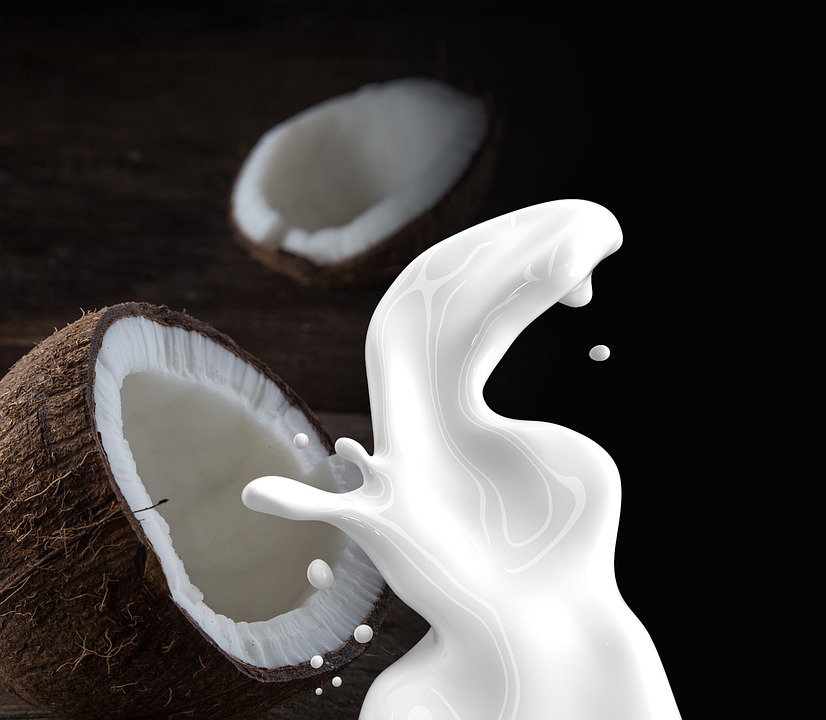Food
Ultimate Guide to Dairy Alternatives: What You Need to Know

So, you’re curious about dairy alternatives, huh? Well, you’re in the right place! Whether you’re lactose intolerant, vegan, or just trying to mix things up, there’s a whole world of plant-based milks and other dairy substitutes out there that can satisfy your cravings. Let’s dig into the ultimate guide on this creamy topic!
What Are Dairy Alternatives?
Dairy alternatives are products designed to replace traditional dairy items like milk, cheese, and yogurt. These alternatives come from various plant sources and provide many options to suit different tastes and dietary needs. The best part? They often pack their own unique flavors and health benefits, too!
Why Choose Dairy Alternatives?
There are several reasons people opt for non-dairy options:
- Lactose Intolerance: Many individuals have trouble digesting lactose, making alternatives a comforting option.
- Vegan lifestyle: For those avoiding all animal products, plant-based dairy is a must.
- Health Benefits: Sometimes, people choose dairy-free options for lower calories or healthier fat profiles.
- Environmental Awareness: Plant-based diets typically leave a smaller carbon footprint.
Types of Dairy Alternatives
There are quite a few different types of non-dairy substitutes out there. Let’s break them down:
Plant-Based Milk Options
-
Almond Milk
- Flavor: Nutty and slightly sweet.
- Nutrition: Low in calories; often fortified with vitamins like D and E.
- Uses: Great in smoothies, cereal, and coffee.
-
Soy Milk
- Flavor: Creamy, with a mild bean taste.
- Nutrition: High in protein; a good source of calcium if fortified.
- Uses: Versatile enough to cook, bake, or drink straight.
-
Oat Milk
- Flavor: Sweet, with a rich texture.
- Nutrition: Contains fiber and often fortified with vitamins.
- Uses: Excellent for coffee and baking due to its creamy quality.
-
Coconut Milk
- Flavor: Tropical and slightly sweet.
- Nutrition: High in saturated fat; use sparingly.
- Uses: Perfect for curries, smoothies, or desserts.
-
Cashew Milk
- Flavor: Rich and creamy.
- Nutrition: Lower in calories; usually fortified.
- Uses: Ideal for creamy sauces and soups.
-
Rice Milk
- Flavor: Light and sweet.
- Nutrition: Generally low in fat; high in carbohydrates.
- Uses: Good for those with allergies to nuts or soy.
Dairy-Free Cheese Alternatives
Making cheesy recipes dairy-free is easier than you might think! Here are common types of cheese alternatives:
- Nut-Based Cheese: Made from cashews or almonds, these provide a creamy texture and strong flavor.
- Soy-Based Cheese: Often made from tofu, these are good for melting and cooking.
- Nutritional Yeast: This isn’t cheese per se, but sprinkled on veggies or pasta, it gives a cheesy flavor and loads of vitamins.
Dairy-Free Yogurt
Just because you’re skipping milk doesn’t mean you can’t have yogurt! Here’s what’s out there:
- Coconut Yogurt: Creamy and delicious, usually a bit sweeter.
- Almond Yogurt: Smooth and packed with flavor.
- Soy Yogurt: Higher in protein and often fortified.
Nutritional Considerations
Switching to dairy alternatives doesn’t mean you have to compromise on nutrition. Here are some factors to keep an eye on:
- Protein Content: Not all alternatives are created equal. Soy milk generally has the highest protein content among plant-based milks. Almond and rice milks typically have much less.
- Added Sugars: Some brands load their dairy alternatives with sugars. Always read the label and opt for unsweetened varieties when possible.
- Fortification: Look for products fortified with calcium, Vitamin D, and B12 to ensure you’re getting a balanced diet.
How to Choose the Right Dairy Alternative for You
With so many choices out there, how do you decide? Here are a few tips:
- Taste Test: Everyone’s pallet is different! Try a few varieties to find the one you love best.
- Purpose: Think about what you’ll be using it for—baking, cooking, or just sipping. Each type behaves differently in recipes.
- Ingredient List: Look for options with simple, recognizable ingredients. Avoid overly processed products.
Cooking and Baking with Dairy Alternatives
So, you found your favorite dairy alternatives—now what? Let’s chat kitchen magic. Here are some handy tips for cooking and baking:
- Substituting Milk: You can often swap in plant-based milk the same way you would regular milk, though you may want to adjust cooking times for creaminess.
- Creamy Sauces: Use cashew cream or coconut milk for a rich texture without dairy.
- Baking: Most dairy alternatives can replace dairy milk in baking with minimal adjustment. Just keep an eye on the moisture content!
Popular Brands to Consider
Here are a few brands that often come highly recommended:
- Oatly: Known for its oat milk and creamy texture.
- Almond Breeze: A staple almond milk brand, reliable and tasty.
- Silk: Offers a wide range of soy, almond, and cashew products.
For an in-depth look into health benefits, check out Healthline’s guide on dairy alternatives.
Navigating the Aisles
If you walk into a grocery store, dairy alternatives occupy their own section, often next to the dairy products. Be sure to check the labels and pick out what fits into your lifestyle best. Don’t forget to try out some new recipes with whatever you choose!
Final Thoughts
This guide should give you a solid introduction to dairy alternatives and all the exciting options out there. Remember, it’s not just about replacing dairy; it’s about finding flavors and textures you love. So go ahead and explore! Dive into smoothies, creamy sauces, or just a glass of your favorite plant-based milk. Who knows? You just might find your new favorite treat!
